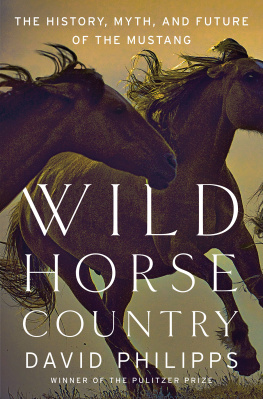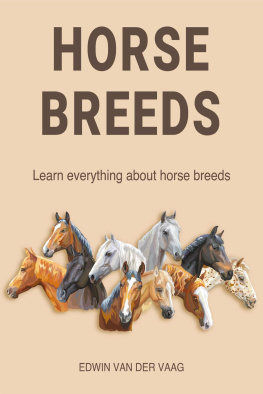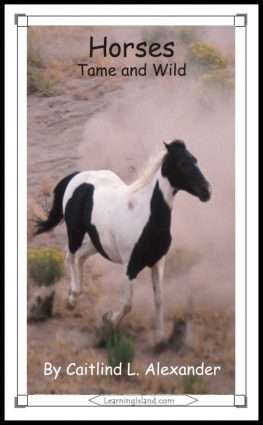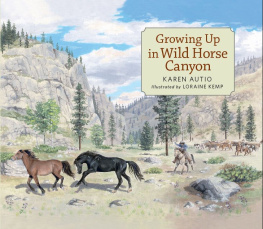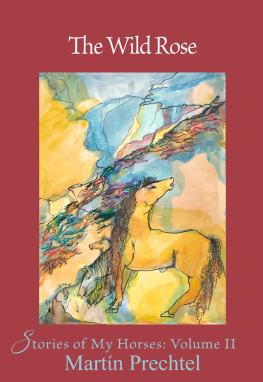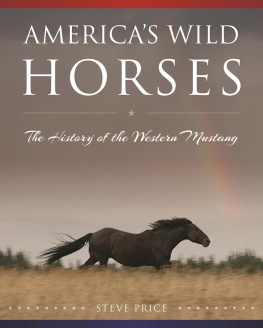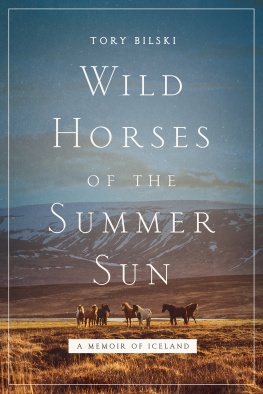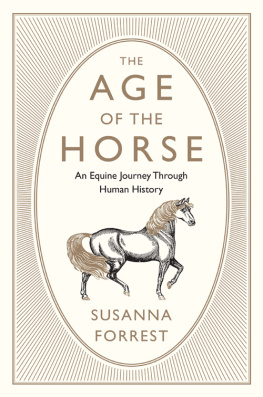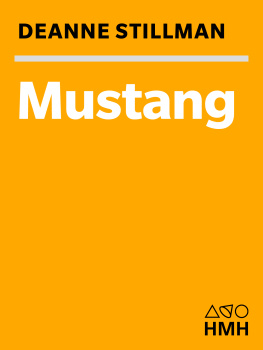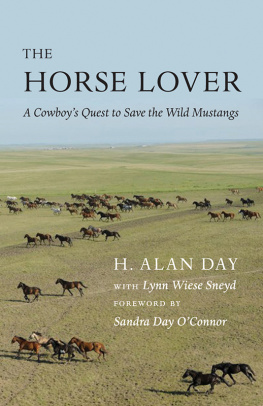
For Whitman and Frost, who were born wild and free
No one who conceives him only as a potential servant to man can apprehend the mustang. The true conceiver must be a lover of freedoma person who yearns to extend freedom to all life.
J. FRANK DOBIE
Like anyone who works on reporting in dusty and remote country, I relied on the graceful guidance of many locals who made my work easier, pointed out unmarked roads, warned of washed-out arroyos, and at one point helped me replace the bumper on a pickup. Many thanks to them. Just as important, the Ted Scripps Fellowship in Environmental Journalism at the University of Colorado in Boulder gave me the time, companionship, and first-rate research library to start my work. Propublica, High Country News, the Gazette of Colorado Springs, and the New York Times allowed me to continue the reporting that made this book possible. A number of very gracious wild-horse lovers were willing to guide me even though I didnt know a halter from a hat, including Ginger Kathrens, Laura Leigh, and T. J. Holmes. The scientists whose work I relied on, and who were patient and generous with their time, deserve great thanks: Gus Cothran at Texas A&M, Douglas Bamforth at the University of Colorado, and Ken Rose at Johns Hopkins University; and a special thanks to John Turner and his crew who not only showed me Montgomery Pass but also showed me that beer mixed with Gatorade can be a refreshing field ration when the thermometer in Wild Horse Country climbs above 100 degrees. Thanks also to Jay Kirkpatrick, who died during the time when I was writing but whose spirit lives in the growing number of people pursuing wildlife fertility control.
Thanks to Julie Litts Robst, who helped me track down information on her great uncle, Frank Litts, whom she described as a rather strange man. Thanks to the many people from the Bureau of Land Management who helped in public and private ways to get the information and access I needed, even when it often meant opening the agency to criticism. Thanks to the many reporters whose work I relied on, especially Martha Mendoza of the Associated Press, who did phenomenal work and whose footsteps I followed years later. And a special thanks to my two sons and my wife, who showered me with patience and support, even when it meant long hours away in the desert or sequestered at a keyboard. You mean more to me than I can ever fully express.
J ust after dawn on a frigid January morning, I clambered to the top of a coffee-colored rock spine rising a hundred feet above the gray floor of a broad bowl of sage and alkali dust called Sand Springs Valley and looked out across an unbroken expanse of nothing. Legions of gray brush spread out for miles toward dark mountains that against the brightening dawn looked like a dark tear across the winter sky. What was out here? Beyond the fog of my breath, not much.
Sand Springs is one of those rare scraps of American West that has changed little since the glaciers receded. There are no towns, no houses, not even a shack. I saw no fences, no power lines, no road signs, no roads. There were no blinking antenna spires, no cell towers, not even really a tree. All the bars on my cell phone had long since disappeared and the radio was static. Most of the mountains fencing in the valley were not just unvisited but nameless. I had bumped in on a dirt road that had turned to a gravelly track, then eventually shrunk to two ruts. Brush screeched along the belly of my truck and the smell of crushed sage under tires rose up as thick as incense. It was the kind of place where, if you broke down, you could wait days for help before deciding just to walk out on your own.
I was in the middle of Nevada, in the heart of a region known as the Great Basina vast accordion of long valleys and jagged mountain ranges that runs down the interior of the West, through Oregon, Idaho, Nevada, Utah, Arizona, and a sliver of eastern California. On a map, the long valleys look as if the center of the nation had been hastily ironed into pleats. The Great Basin is some of the driest country in North America, and the emptiest. It gets its name from the fact that creeks and rivers here never reach the sea. They either sink into the sandy sage or run out onto salt flats where the ever-present sun dries their modest flow into a shimmering white alkaline crust. Locals like to say that what the West once was, the Great Basin still is: open range, cattle rustlers, ghost towns, gold mines, and land so seamless you want to reach out and touch it to make sure it is not just a painted backdrop behind John Wayne.
When I reached the top of the rock outcrop, it was just after 7 a.m. and 19 degrees. The only man-made thing I could see in the vast sweep of hundreds of square miles of desert was some pink plastic tapethe type surveyors use. It had been stretched roughly into a rectangle the size of a walk-in closet along the uneven rocks on top of the spine. And I had been told to stand in it, and not to step out.
Standing next to me was a federal law enforcement agent with a pistol on his hip. He was tall, with thick forearms that he kept folded, and he wore inscrutable dark sunglasses even though the sun had not yet come up. Next to him was a public affairs officer from the Bureau of Land Management (BLM): a somewhat pudgy, smiling man with gray hair and what looked like a twenty-year-old Thermos that he kept constantly unscrewing to pour tiny cups of coffee for himself. The law enforcement agents job was to make sure I stayed in the ribbon. The public affairs officers job was to answer any questions about it.
As we waited for the sunrise to warm us, I asked him why, in such a remote place, we needed to stand within the ribbon.
For my safety, and the safety of the operation, he told me, never dimming his smile.
What would happen if I stepped out of the ribbon?
The ribbon is here for you and you need to stay in it, he said.
But couldnt we just move a little outside the ribbon, to a slightly better spot on the rock? We were, after all, in the middle of nowhere. Who would know?
The law enforcement agent, who had not said more than a few words since I had met him a half hour earlier, slowly shook his head and said, Just stay in the ribbon.
So we all stood inside the ribbon. I wiggled my toes in my boots to keep them warm and looked out at the sweep of the valley. I was there for one reason. I had always wanted to see wild horses. And this was the place to do it. As the first sunlight spilled into the valley, I raised my binoculars and peered out into the distance. Miles away, I saw them. A string of eight dots running. So small they looked like no more than ants in the vast valley, but so fast that they could be nothing else.
Wild horses! Just saying the words sets off a stampede of images: echoing box canyons and dusty blue mesas, hooves flying through golden grass, the defiant scream of a rearing stallion, heat waves rippling the distance, speed and strength and cliffs and cactus and dust and grit, lonely places where big empty skies define the day and coyote songs define the night, wild places forever beyond the grip of civilization.
Wild horses! Even if you have never seen one, chances are if you grew up in the United States you know what they mean. They are freedom. They are independence. They are the ragtag misfits defying incredible odds. They are the lowborn outsiders whose nobility springs from the adversity of living a simple life. In short, they are American. Or at least they are what we tell ourselves we are, and what we aspire to be. If you think Im laying it on a little thick, consider this: There are only two animals for which the United States Congress has ever specifically passed laws to protect from harm. The first was the bald eagle. The second was the wild horse.
Next page
